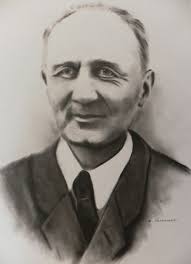Ossowski, Stanisław

Bio: (1897-1963) Polish sociologist. Stanislav Ossowski received his doctorate from the University of Warsaw and taught at the universities of Łódź and Warsaw. He is one of the founders and the first president of the Polish Sociological Association, and he was also one of the founders of the International Sociological Association and its vice president. He synthesized humanistic (interpretive) sociology with rigorous empirical analysis. Ossowski studied various subjects - social structure, methodology, social psychology, aesthetics, and art. In the book Fundamentals of Aesthetics (1933), Ossowski explores the role of natural beauty and the beauty of human-made objects in the spiritual life of people and their culture. Together with his wife Maria Ossowska, who was also a sociologist, he wrote the work The Science of Science (1935) and that work made them the founders of the discipline of the science of science. In the book Towards New Forms of Social Life (in Polish 1943), Ossowski presents his vision of a socialist democracy in which, at the same time, there is a planned economy and social equality, but also individual freedoms and cultural diversity.
His most famous book is Class Structure in the Social Consciousness (1957). In this book, he analyzed three different ways in which social stratification and class structure have been conceptualized in different theoretical and ideological approaches. The first approach to class structure is functional that stresses the complementarity of different classes; the second approach is gradational which views classes in a hierarchical way; the third approach is Marxist that uses the concept of exploitation to present classes as dichotomous systems in which the existence of one class directly depends on the existence of another class (owners versus workers) and emphasizes social antagonisms. The first two approaches are often adopted by the individuals from upper classes, while the antagonistic class scheme is used for the radicalization of lower classes and for attacking the existing social order. Ossowski stressed that the Marxist approach to class structure is inadequate for explaining modern and complex industrial societies. Social hierarchy in those societies depends not only on class exploitation but also on control of authority and means of consumption.
In the book On the Peculiarities of Social Sciences (1962), Ossowski advocates the point of view that sociology should be based on the principle of anti-naturalism, that is, that there is a key difference between natural and social sciences. The characteristic of all social phenomena is that they always contain a conscious aspect - beliefs, imagination, motives, knowledge, etc.
Main works
The Foundations of Aesthetics (1978, in Polish 1933);
“The Science of Science”, in Minerva (1964, in Polish 1935);
Więź społęcna i dziedzictwo krwi (1939);
Ku nowym formom źycia spoiecznego (1943);
Class Structure in the Social Consciousness (1963, in Polish 1957);
O osobliwościach nauk socialiświec (1962);
O ojczyźnie i narodzie (1984).

